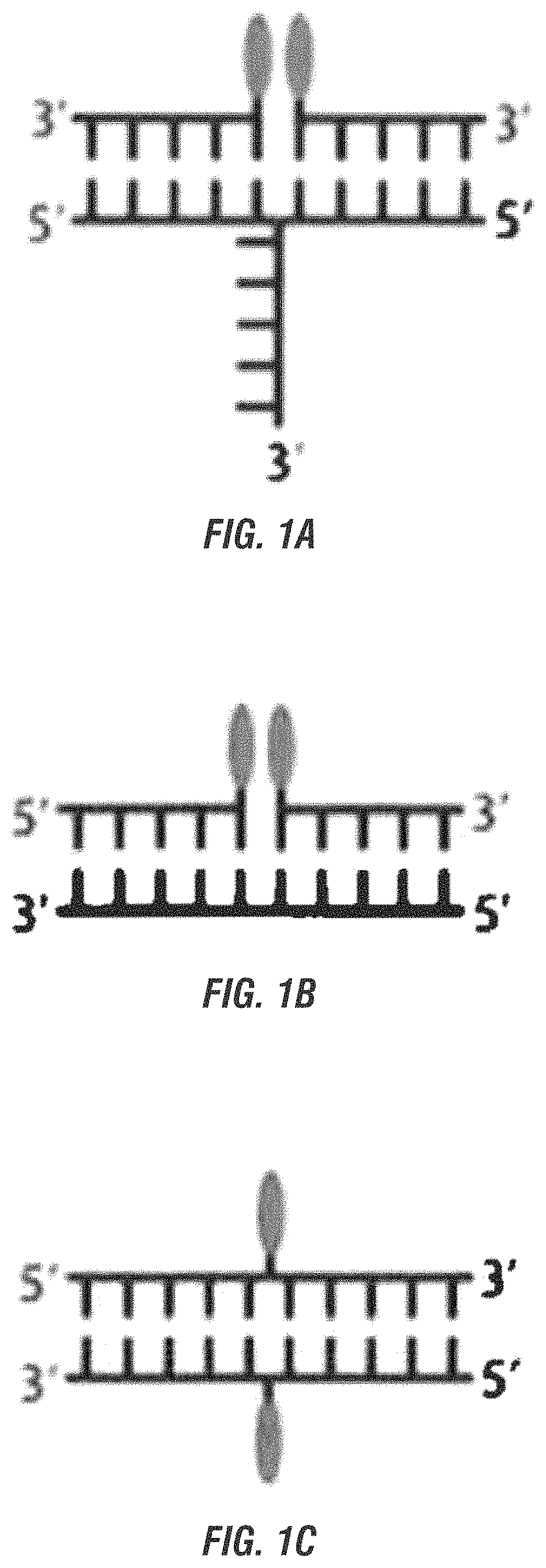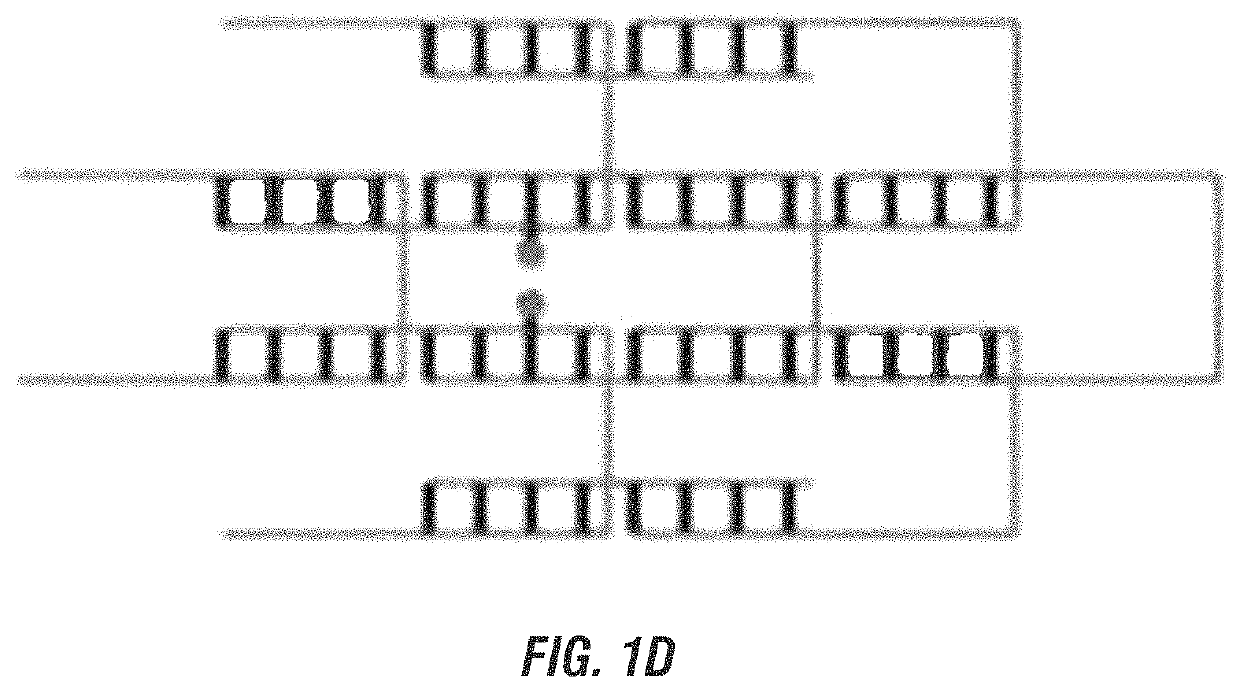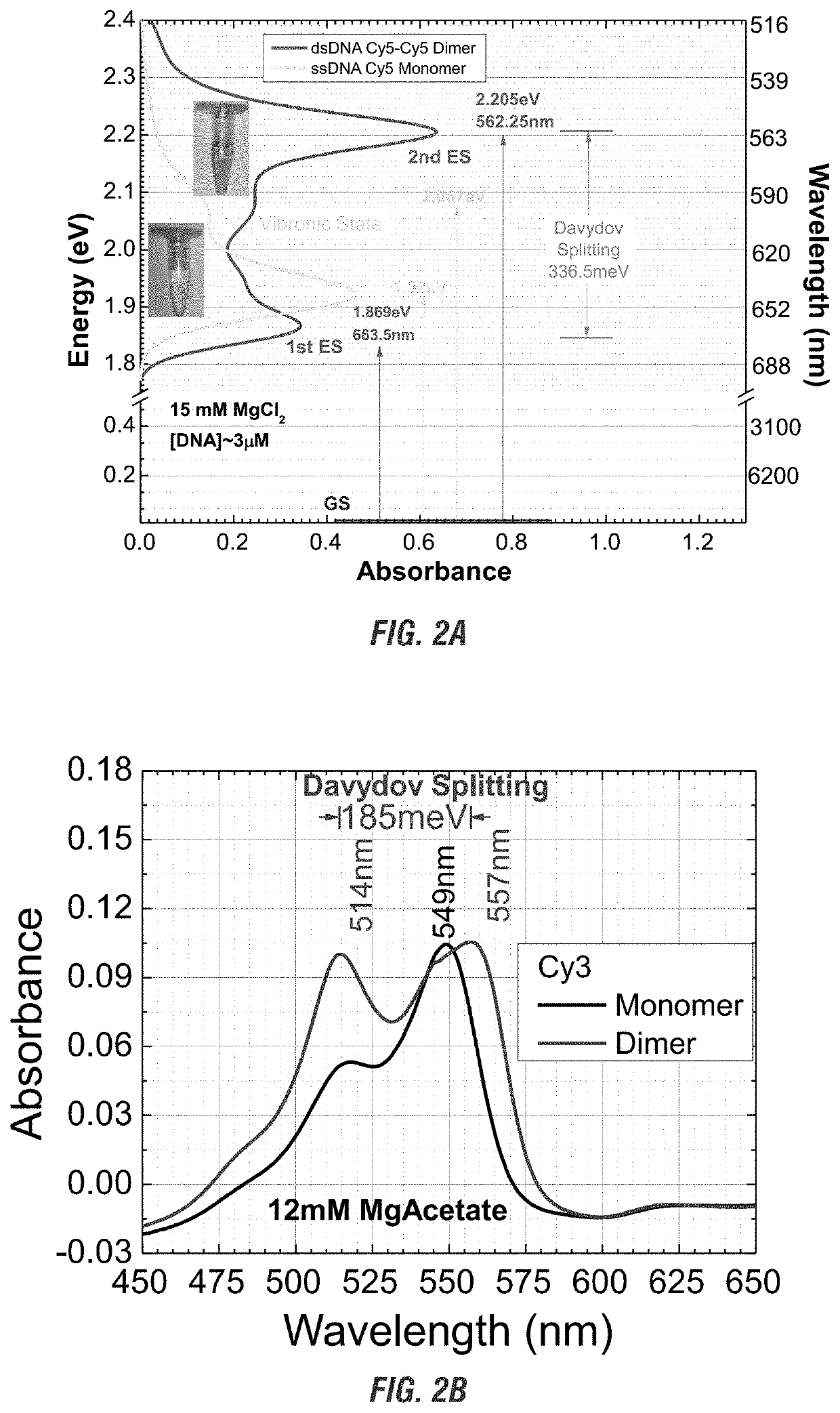DNA ink—near-field absorption coupling for colorimetric detection, DNA ink, chromic photoswitches, and chromic molecular ruler
a chromophores and dna ink technology, applied in the field of dna ink, can solve the problems of difficult to resolve molecular packing details, insufficient control of aggregation position and geometry, and controversial aggregate structure, and achieve the effects of increasing rigidity of chromophores, fast transmission speed, and increasing sensitivity
- Summary
- Abstract
- Description
- Claims
- Application Information
AI Technical Summary
Benefits of technology
Problems solved by technology
Method used
Image
Examples
example 1
[0127]To determine the position of a Cy5-Cy5 dimer bound to a nucleic acid oligomer, the absorbance and energy were measured over a range of wavelengths, covering the known absorbance and emittance wavelengths of Cy5, ranging from about 500 nm to about 6200 nm and compared to a Cy5 monomer (see FIG. 2A).
[0128]The absorbance verses energy of a Cy5 monomer attached to a linear single stranded DNA oligomer (ssDNA-Cy5) was compared to Cy5-Cy5 dimer attached to a double stranded DNA oligomer (dsDNA-Cy5) in the presence of 15 mM MgCl2. The concentration of DNA was about 3 μM. The monomer and dimer were exposed to increasing wavelengths of light and the absorbance and energy was measured.
[0129]As shown in FIG. 2A, the monomer has one primary absorption peat at 1.92 eV. In comparison, the dimer showed Davydov splitting, having two exciton absorption peaks, one at 1.87 eV and one at 2.205 eV. The 1.87 eV peak, a red shift from the monomer peak, shows the presence of J-dimer behavior. The 2.2...
example 2
[0132]To measure the flexibility of the dsDNA-Cy5 on a linear strand of nucleic acid, the conditions of the solution and temperature were altered to detect changes in the absorbance spectrum.
[0133]The linear dsDNA-Cy5 strands were exposed to wavelengths of about 500 to about 700 nm. The salt concentrations were altered from 0 to about 1500 mM of NaCl. As shown in FIG. 3A, as the concentration of salt increased, dsDNA-Cy5 showed a reduction in Davydov splitting (J1-V peaks), and a loss of J-dimer characteristics (J1 peak). At about 1000 mM NaCl, dsDNA-Cy5 showed a loss of J-dimer characteristics, with a result of just H-dimer characteristics when compared to the ssDNA-Cy5 monomer. As shown in FIG. 3B, an increase in salt levels from 0 to about 909 mM NaCl showed the CD changed as well, with 0 mM salt showing Davydov splitting and J-dimer characteristics and 909 nM NaCl showing H-dimer characteristics. The change in CD shows that polarization and angle of the chromophore may also be o...
example 3
[0137]To determine the effect of separation on the absorbance spectrum, the number of nucleotides to which the chromophores were bound along a linear oligomer were varied for different dyes.
[0138]As shown in in FIG. 4A, two Cy5 chromophores were bound from 0 to 8 nucleotides apart on a double stranded DNA oligomer and keeping the salt concentration of the solution at 15 mM MgCl2. As shown, as the distance increased the absorbance spectrum of the Cy5 chromophores exhibited dimer characteristics, as evidenced by the Davydov splitting, at close distances of about 2 nucleotides (bp) or less. At 3 nucleotides and more the Cy5 chromophores exhibited monomer characteristics. In contrast, TAMRA chromophores in a 12 mM MgAcetate solution showed dimer characteristics when spaced further apart from each other, maintaining dimer characteristics at least until 5 nucleotides apart (FIG. 4B). The dimerization characteristics for TAMRA was lost at 10 nucleotides as measured by the change in absorba...
PUM
| Property | Measurement | Unit |
|---|---|---|
| emittance wavelengths | aaaaa | aaaaa |
| wavelengths | aaaaa | aaaaa |
| emission peak maxima | aaaaa | aaaaa |
Abstract
Description
Claims
Application Information
 Login to View More
Login to View More - R&D
- Intellectual Property
- Life Sciences
- Materials
- Tech Scout
- Unparalleled Data Quality
- Higher Quality Content
- 60% Fewer Hallucinations
Browse by: Latest US Patents, China's latest patents, Technical Efficacy Thesaurus, Application Domain, Technology Topic, Popular Technical Reports.
© 2025 PatSnap. All rights reserved.Legal|Privacy policy|Modern Slavery Act Transparency Statement|Sitemap|About US| Contact US: help@patsnap.com



